
Watch out, Audi! How Lexus staged a sales comeback in 2023 off the back of updated Lexus RX, NX and UX SUVs
The cold, hard facts of the 2022 sales data were not good for Lexus. The brand...
Browse over 9,000 car reviews
.jpg)
No-one should question the great work the Australian New Car Assessment Program (ANCAP) has done to improve the safety for motorists. But, what is coming under increasing question is whether or not Australian new-car buyers are getting a clear picture of what is and isn’t a safe car.
While it’s a complex and complicated issue, the crux of the matter is the need for more safety equipment, specifically active safety technologies required to meet ANCAP’s rising bar for five stars, is compounding the rising cost of new cars. Carmakers are being forced to choose between safety and price, and with ANCAP a powerful voice in the industry, it has the potential to add to the cost-of-living pressures Australians are facing.
At the same time, it raises obvious questions over the nature of ANCAP’s safety ratings and highlights the complexity of understanding the ever-increasing targets the safety body sets for carmakers. For example, the Toyota Corolla has a five-star ANCAP rating but was crashed back in 2018, while the new GWM Ora has a five-star rating as well but was tested in 2022.
Do you, as a member of the car-buying public, understand the differences in criteria between those time periods? Possibly not, because it takes a deep dive into the ANCAP website and some not-insignificant research to work it out. And yet, if you go to ANCAP’s website, both cars are rated the same despite some notable safety differences, which does undermine the good work the organisation is doing.
Indeed, if the Corolla was crash tested today, to the new-for-2023 protocol, there is no guarantee it would be a five-star car. That isn’t to say a slightly older model like the Corolla is suddenly an unsafe car though, but instead it becomes a victim of the moving target that is a five-star ANCAP score.
This topic has bubbled to the top of my brain this week as I reflect on an interview with MG Australia boss, Peter Ciao.
Asked at a recent event if it would be possible for a car costing less than $30,000 to score a five-star rating, he praised ANCAP and its work but admitted that adding the extra safety features to achieve the maximum score would simply cost more money and drive up the price of the brand’s models.

Which puts car companies in a Catch-22 situation. Because ANCAP has effectively become a ‘pass/fail’, with anything less than five-stars criticised as not being good enough by the organisation.
Don’t believe me? When the Citroen C4 only got a four-star rating in November 2021, ANCAP chief executive office, Carla Hoorweg was highly critical of the French brand for not matching its five-star rivals.
“The safety performance of the C4 suggests the same level of ambition shown by many of its competitors was not a focus for Citroën with this particular model,” Hoorweg said.
Ouch.

It was a similar story when ANCAP decided to crash test the Hyundai Palisade, just months before it was due for an update which would bring added safety. ANCAP tested the pre-facelifted model and published a four-star rating in June 2022 and slammed the brand for not meeting ANCAP’s top standard.
“The Hyundai Palisade fell short in two of the four key areas of assessment which unfortunately has seen it unable to meet the top level of safety that families and fleets have come to expect,” Hoorweg said.
Again, ouch. Bringing the families into it, double ouch.
ANCAP rationalised its decision to spend likely more than $300,000 to buy and crash five Palisades because it was the only top-10 selling model in its segment without an independent safety rating and specifically mentioned that “all other models within the segment hold a five-star ANCAP safety rating”.

But what ANCAP didn’t mention was that of those nine cars in the segment at the time, only three others were tested to the same post-2020 testing protocols as the Palisade. The best-seller in the class, the Toyota Prado, has a five-star ANCAP rating that dates back to 2011, albeit with updates to the score in 2017 when new tech was added.
While it’s perfectly understandable that ANCAP does not crash test every new model every time it comes out, as that’s simply not financially or logistically achievable, it does undermine the organisation’s assertion that it’s role is “to provide clear, reliable and independent consumer information” as Horweg herself pointed out at the time.
It was not made clear by ANCAP in its press release about the Palisade’s four-star test that it was measured against a different standard to six other SUVs in the segment.
To make matters less clear to the average new-car buyer, who doesn’t spend hours researching the various differences between updated crash testing criteria, by August 2022 the facelifted Hyundai Palisade was now a five-star model.

To ANCAP’s credit it has added ‘use-by dates’ to its ratings, so the older crash test scores will fade over time, but there’s still differences between cars tested today and under the previous criteria.
What this situation demonstrates is that ANCAP's focus on five stars puts car makers under immense public pressure to add as much safety equipment as possible which plays a part in driving up the cost of new cars.
Car prices are already on the rise for a variety of reasons, including the cost of raw materials and shipping going up, to good old-fashioned inflation. But if prices continue to go up, it will price more and more people out of the new-car market.
A brand like MG has been successful in Australia in large part because its cars are affordable. They have managed to undercut the more established competition, in some cases because they have offered fewer safety features - as demonstrated in the MG5. But is an MG5 fundamentally an unsafe car? Is it less-safe than a five or 10-year old Toyota or Hyundai? Because that’s what buyers will be forced to consider if MG adds more safety and the prices rise above $30,000.

Obviously in an ideal world everyone would be a brand-new five-star ANCAP-rated car every time.
But that’s simply not possible because not everyone can afford a new car, so compromises have to be made and that will likely include more and more cars not achieving five stars from ANCAP. And we, the car buying public, need to understand better what that really means.
Because as the bar for five stars is raised (as it should be to force carmakers to keep improving), we need to learn to accept that to keep new cars affordable for a huge amount of Australians, we need to understand the nuances between ANCAP’s rating systems to make sure we’re making the best decisions for ourselves and our families.
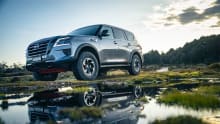

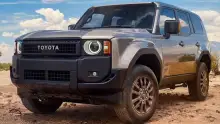

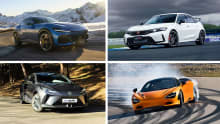
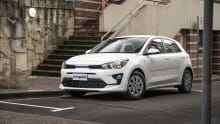
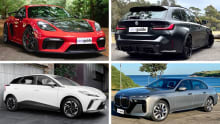

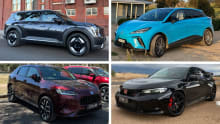
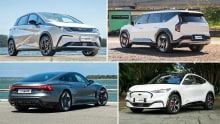
Comments